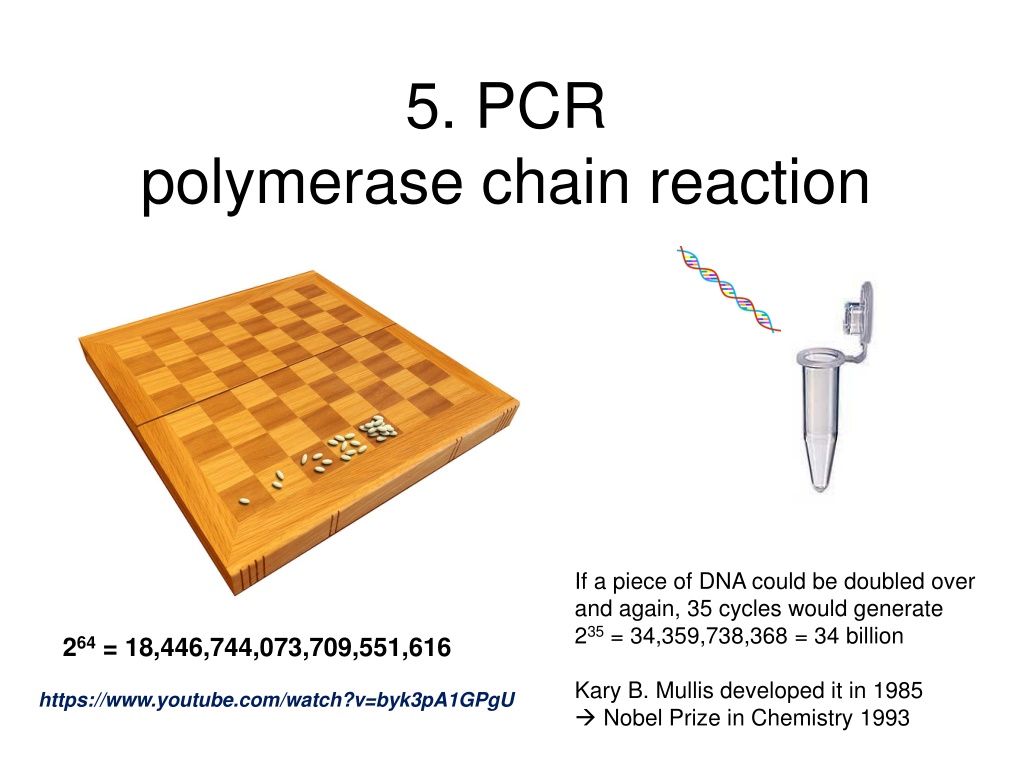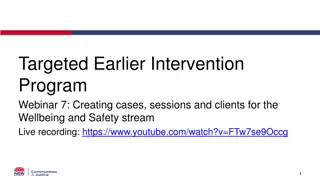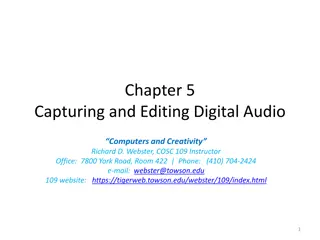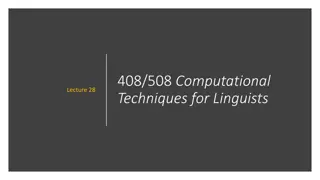
Understanding PCR: Applications, Principles, and Procedure
PCR (Polymerase Chain Reaction) is a powerful molecular biology technique developed by Kary B. Mullis in 1985. It involves amplifying specific DNA sequences for various applications such as cloning, genetic identification, forensics, and mutation studies. Learn about the principles, components, and steps involved in PCR cycles.
Download Presentation

Please find below an Image/Link to download the presentation.
The content on the website is provided AS IS for your information and personal use only. It may not be sold, licensed, or shared on other websites without obtaining consent from the author. If you encounter any issues during the download, it is possible that the publisher has removed the file from their server.
You are allowed to download the files provided on this website for personal or commercial use, subject to the condition that they are used lawfully. All files are the property of their respective owners.
The content on the website is provided AS IS for your information and personal use only. It may not be sold, licensed, or shared on other websites without obtaining consent from the author.
E N D
Presentation Transcript
5. PCR polymerase chain reaction If a piece of DNA could be doubled over and again, 35 cycles would generate 235 = 34,359,738,368 = 34 billion 264 = 18,446,744,073,709,551,616 Kary B. Mullis developed it in 1985 Nobel Prize in Chemistry 1993 https://www.youtube.com/watch?v=byk3pA1GPgU
What is PCR? A method to select a particular (known) sequence and amplify millions or billions of copies of that sequence in order to work with it further Bisc 357 2
What is PCR used for? Amplifying a gene so we can clone it (making the insert) Identifying individuals in a population by amplifying key genes that differ between individuals Ranges from studies of wildlife populations to forensics- finding the killer or the long lost heir Making probes, sequencing DNA for many purposes such as identifying variants or mutations in DNA, assessing level of expression of particular genes Introducing mutations into a gene of interest to study its function Bisc 357 3
Commonly PCR can be used to amplify specific gene/fragment from complex genomes PCR products or amplicons Bisc 357 4
Principle: You use short primers (around 18-24 nt long) to TARGET specific DNA sequences This means you have to have some knowledge of the gene you want to amplify You can then amplify HUGE amounts of that selected sequence (millions or billions of copies of it), to levels where you have enough to: Visualize on a gel Clone Sequence (etc.) Bisc 357 5
What does PCR involve? DNA template (genomic, cDNA, plasmid etc) Nucleotides (dNTPs) Reaction buffer with correct salts, pH, Mg++ Primers specific for the gene of interest (forward and reverse) Taq polymerase, or other thermo-tolerant DNA polymerase This polymerase can undergo many rounds of heating and cooling to amplify the DNA of interest Bisc 357 6
How we do PCR Cycles: denaturing: high temperature (95C) to denature the DNA, pull the strands apart (also called melting ) annealing: temperature lowered to allow the primers to bind specifically to the DNA target extension: temperature raised to 68 or 72 to allow the strands to be completed by the polymerase Repeat as needed, usually 20-35 cycles Bisc 357 7
Polymerase Chain Reaction (PCR) is carried out in thermocyclers
Polymerase Chain Reaction (PCR) performed in a thermocycler Extension time varies depending on your product size and the enzyme. Must have a long enough extension time to make the correct product 1. 94oC for 30 s 3. 72oC for variable time 2. 55oC, for 30 s e.g. Taq is 60 seconds per kb, but some enzymes claim 1 kb in 10 seconds one cycle Usually 30-40 cycles total Bisc 357 9
Then, the known DNA polymerases were heat sensitive Needed to add more enzyme after each denaturation cycle Expensive and used up a lot of a grad student s time So not used much until a breakthrough occurred- not practical The breakthrough: heat tolerant polymerases Isolated from organisms living in the hot spots of the world Bisc 357 10
https://instruction.bact.wisc.edu/themicrobialworld/LAHT/b27.htmlhttps://instruction.bact.wisc.edu/themicrobialworld/LAHT/b27.html BY Thomas D. Brock Bisc 357 11






















